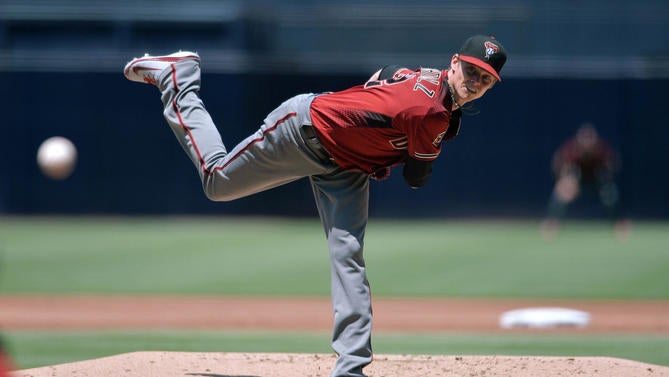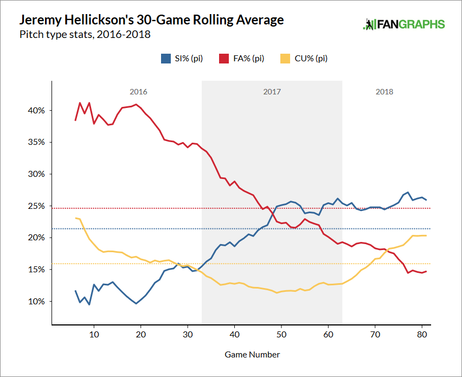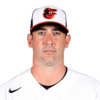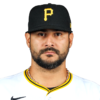Although it ended with a Wild Card Game loss, the 2018 season was a smashing success for the Oakland Athletics. They went from 75-87 in 2017 to 97-65 in 2018 and had the fourth-best record in baseball. The turnaround earned Bob Melvin his third career Manager of the Year award.
Oakland won 97 games this year despite being woefully short on starting pitching. In fact, they didn't even a starter for that Wild Card Game. Liam Hendriks started what was a true bullpen game. Sean Manaea led the team in starts (27) and innings (160 2/3) in 2018, both by a lot, and he needed season-ending shoulder surgery in September.
The A's got solid work from low-cost pickups Trevor Cahill and Edwin Jackson, and Mike Fiers gave the team a nice shot in the arm after coming over in an August waiver trade. Cahill and Jackson (and Brett Anderson) are free agents though, and right now Oakland's rotation depth chart looks something like this:
- Mike Fiers
- Daniel Mengden
- Frankie Montas
- Chris Bassitt
- Andrew Triggs (missed second half with nerve irritation in his arm)
- Paul Blackburn (missed second half with an elbow injury)
- Aaron Brooks
Manaea (shoulder surgery), Jharel Cotton (Tommy John surgery), Kendall Graveman (Tommy John surgery), and Daniel Gossett (Tommy John surgery) are all rehabbing and won't be ready to start next season. In fact, only Cotton is expected to return in 2019. The other three had their procedures fairly late in 2018 and aren't expected back next year.
Even with top pitching prospect Jesus Luzardo knocking on the door, the Athletics have a clear need for rotation help this offseason. I mean, pretty much every team needs starting pitching in the offseason, but the A's need it more than most. They're not going to win a bidding war for free agents like Patrick Corbin and Dallas Keuchel, and they probably won't gut the farm system to trade for James Paxton or Corey Kluber. That's now how this team operates.
Instead, the Athletics are likely to continue on the same path of seeking out low-cost pickups, which they've done quite well in recent years. It was Cahill and Jackson this year. They took a chance on Bartolo Colon after he resurfaced in 2011. They rolled the dice on Scott Kazmir in 2014 and Rich Hill in 2016. That's what the A's do. They look for low-cost pitchers with upside. Sometimes it works, sometimes it doesn't. That's baseball.
So, with that in mind, here are five starting pitchers the Athletics could target this offseason as they again look to add low-cost -- low-cost as in a one-year contract or maybe a two-year deal with a low base salary -- rotation help with upside potential.

A torn flexor ended Clay Buchholz's 2017 season after two starts with the Phillies, and, this year, his comeback attempt with the Royals was cut short when they released him in May. The Diamondbacks picked him up and he was a godsend, making 16 starts and throwing 98 1/3 innings with a 2.01 ERA (215 ERA+) and a 1.04 WHIP. His strikeout (7.4 K/9) and walk (2.0 BB/9) rates were his best in years.
Buchholz, now 34, did continue to battle injuries with Arizona. He missed a month with an oblique strain and was shut down in mid-September with more flexor issues. And, truth be told, he's not wildly different from his Red Sox days. He doesn't throw as hard anymore, but it's the same pitch mix and same approach. Buchholz credited his 2018 success to improved mental preparation while chatting with the Arizona Republic's Nick Piecoro.
I wouldn't count on Buchholz posting another 2.01 ERA in 2019 -- I wouldn't expect anyone to do that again, even the greats like Jacob deGrom and Max Scherzer -- but with good health and some more veteran craftiness in his game, plus a move into a pitcher friendly ballpark like the Oakland Coliseum, could help Buchholz continue his resurgence.
Unlike the other four players in this post, Sonny Gray is not a free agent. He is under team control as an arbitration-eligible player in 2019 and will become a free agent next offseason. The Yankees have made it clear Gray will be traded, however. Frankly, it's been shocking how candid Yankees GM Brian Cashman has been about Gray's future with the club. Usually teams will play it cool and not advertise a player's availability. That is most certainly not the case here.
The Athletics are of course familiar with Gray, having drafted him in the first round in 2011 and carrying him on their big-league roster from 2013 until the 2017 trade that sent him to New York. As is often the case, the trade had more to do with salary than production. Gray was starting to get expensive through arbitration and the A's have a history of trading their best players at that point. They did it with Josh Donaldson, Tim Hudson, and many others.
Know this: Oakland inquired about Gray at the 2018 trade deadline. They were interested in a reunion but the Yankees weren't ready to move on just yet. Now they are, apparently. The 2017 trade hasn't worked out for either team thus far -- Gray's been terrible for the Yankees and the three prospects (Dustin Fowler, James Kaprielian, Jorge Mateo) haven't done anything for the A's -- but, with a reduced price tag, a reunion with Gray could make sense for the 2019 Athletics.
Once one of the best pitchers in the baseball, injuries have derailed Matt Harvey's career, though he did stay healthy enough to make 28 starts and throw 155 innings with the Mets and Reds this past season. He was much better with Cincinnati (4.50 ERA and 93 ERA+) than New York (7.00 ERA and 53 ERA+), though he still wasn't good, and the Reds were unable to flip him for a prospect at the deadline.
Harvey, who turns 30 in March, doesn't miss nearly as many bats as he once did (7.6 K/9 in 2018) and he gives up an awful lot fly balls, which is a profile that could work well in Oakland. There's enough stuff here -- Harvey's fastball averaged 94.6 mph this year and he continues to throw three secondary pitches (slider, curveball, changeup) regularly -- and Harvey's still young enough that it's not unreasonable to think he can improve as he gets further away from his 2016-17 injuries, which included a stress fracture in his shoulder and thoracic outlet syndrome.
For a few years there Jeremy Hellickson ranked among the worst starting pitchers in the game. He threw 736 2/3 innings with a 4.69 ERA (87 ERA+) with four teams (Rays, D-Backs, Phillies, Orioles) from 2013-17. Among the 57 pitches to throw at least 700 innings from 2013-17, Hellickson ranked 55th in ERA, 48th in strikeout rate (6.8 K/9), and 55th in home run rate (1.4 HR/9). A bottom tier starter, through and through.
The Nationals turned to Hellickson as part of their revolving door of fifth starters this past season and he gave them 19 starts and 91 1/3 innings with a 3.45 ERA (123 ERA+). Hamstring and wrist trouble cost him a few weeks during the summer, but, overall, he was rock solid. There is, potentially, a tangible reason for the improvement too. Hellickson shelved his four-seamer and embraced the sinker as his primary fastball, and he threw a lot more curveballs.

For all intents and purposes, Hellickson's plan these days is to throw a lot of pitches that move. That means fewer four-seamers, more sinkers and curveballs, and still plenty of changeups, which has long been his best pitch. It wouldn't be fair to call him a junk-baller, but clearly, finesse is the name of the game here. He's going to change speeds and move the ball all around. The scouting report has changed.
Keep in mind Hellickson is only 31. It feels like he's been around forever -- he was the 2011 AL Rookie of the Year, remember -- but he's only 31, and that's not so old as to suggest he can't have a successful second phase of his career as a sinkerballer who throws a ton of offspeed stuff. Put Hellickson in a pitcher friendly ballpark and a mid-3.00s ERA just might be sustainable.
Martin Perez is one of the most interesting free agents on the market. To me, at least. He's still only 27 and that makes him one of the youngest free agents available. He's also a former top prospect who appeared on Baseball America's annual top 100 prospects list every year from 2009-13. Perez is young enough and still has enough former top prospect shine that of course some team will take a chance on him this winter.
That said, Perez was terrible in 2018, throwing 85 1/3 innings with a 6.22 ERA (78 ERA+) for the Rangers. He also threw 383 2/3 league average (102 ERA+) innings from 2016-17, so you needn't look too far back for the last time Perez was an effective big-league starter. A soon-to-be 28-year-old who is only a year removed from being a mid-rotation innings guy? Who maybe has the potential to be something more in his age 28 to, say, 31 seasons going forward? Hmmm.
Perez to me is a perfect candidate for the anti-fastball movement that is taking over baseball. Even with velocity at an all-time high, pitchers are throwing fewer and fewer fastballs with each passing season, yet Perez is still throwing close to 70 percent heaters between his four-seamer and sinker. I say try scaling it back to 50 percent fastballs or so, mix in more sliders and curveballs and changeups, and see what happens. The A's are the perfect team to experiment with Perez.




























